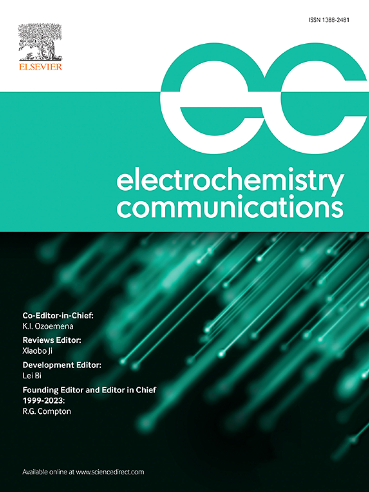模拟全固态锂离子电池的电流密度和荷电状态分布
IF 4.2
3区 工程技术
Q2 ELECTROCHEMISTRY
引用次数: 0
摘要
研究人员对锂离子电池模型进行了深入调查。然而,现有模型的一个显着局限性在于假设无限导电集流器,这损害了模拟精度。本文采用Kirchhoff电路定律和合适的离散化方法,提出了一个明确考虑集电极电阻的模型,以表征全固态薄膜电池中相关的电流密度和SoC分布。仿真结果表明,最高荷电状态出现在充电片附近,导致该区域优先充满电。有趣的是,当充电在此阶段中断时,电池进入自平衡状态:标签附近的充电SoC状态逐渐减少。与此同时,其他区域的SoC也在增加,最终在整个电池中实现均匀的SoC。这种现象反映了锂离子再分配的潜在过程。此外,阴极和阳极集流器之间较大的电阻差造成电流密度分布不均匀,从而加速局部电池老化。我们的模型所采用的方法具有广泛的通用性,可以很容易地适用于其他类型的电池。本文章由计算机程序翻译,如有差异,请以英文原文为准。
Modeling current density and SoC distribution of all-solid-state lithium-ion batteries
Researchers have conducted in-depth investigations into lithium-ion battery models. However, a notable limitation of existing models lies in the assumption of infinitely conductive current collectors, which compromises simulation accuracy. Herein, we present a model that explicitly accounts for current collector resistance, employing Kirchhoff's circuit laws and a suitable discretization method to characterize the associated current density and SoC distribution in all-solid-state thin-film batteries. Simulation results demonstrate that the highest SoC occurs near the charging tab, leading to preferential full-charge in this region. Intriguingly, when charging is interrupted at this stage, the battery enters a self-balancing state: the state of charge SoC near the tab gradually decreases. At the same time, SoC in other regions increases, culminating in a homogeneous SoC across the entire battery. This phenomenon reflects the underlying process of lithium-ion redistribution. Additionally, a larger resistance disparity between cathodic and anodic current collectors creates an inhomogeneous current density distribution, thereby accelerating localized battery aging. The approach adopted by our model exhibits broad generality and can be readily adapted to other battery types.
求助全文
通过发布文献求助,成功后即可免费获取论文全文。
去求助
来源期刊

Electrochemistry Communications
工程技术-电化学
CiteScore
8.50
自引率
3.70%
发文量
160
审稿时长
1.2 months
期刊介绍:
Electrochemistry Communications is an open access journal providing fast dissemination of short communications, full communications and mini reviews covering the whole field of electrochemistry which merit urgent publication. Short communications are limited to a maximum of 20,000 characters (including spaces) while full communications and mini reviews are limited to 25,000 characters (including spaces). Supplementary information is permitted for full communications and mini reviews but not for short communications. We aim to be the fastest journal in electrochemistry for these types of papers.
 求助内容:
求助内容: 应助结果提醒方式:
应助结果提醒方式:


